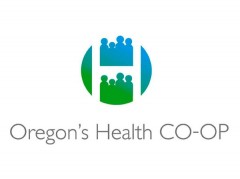Healthy Eating Active Living Cities Campaign
The HEAL Cities Campaign will use the Regional Equity Atlas 2.0 to support its work to promote local policies that create options for healthy eating and active living. While some parts of our region offer many healthy options, others do not. The Atlas maps show that people who live, work, shop, and play in communities that have good access to healthy food options as well as sidewalks, bike paths, parks, and other structures that support health tend to enjoy better health than people who live in communities where nourishing food is unavailable and the only way to get around is by car. The HEAL Cities Campaign, a joint project of the Oregon Public Health Institute and League of Oregon Cities, promotes policies that will improve community health and livability. The Atlas maps offer valuable data to help inform this effort.
 Metro
Metro
Metro plans to use the Regional Equity Atlas 2.0 mapping tool and data as a source of information to help it to incorporate equity considerations into its planning and decision making. The Metro Council has adopted policies to make decisions that advance sixdesired outcomes articulated in the Regional Framework Plan. One of those desired outcomes pertains to equity. The Equity Atlas will serve as a source of information about access to opportunity to help inform Metro’s planning, and Metro project staff will seek guidance from the agency’s Equity Strategy on how best to incorporate the Atlas maps and data into their decision making. Upcoming projects that may be informed by use of the Atlas include the growth management decision, the Regional Transportation Plan, the Metropolitan Transportation Improvement Program, and Climate Smart Communities.
 Northwest Housing Alternatives
Northwest Housing Alternatives
Northwest Housing Alternatives, a nonprofit affordable housing agency, is using the Equity Atlas to evaluate sites for locating new affordable housing units and to better understand the conditions in the communities where their existing affordable housing units are located.
Oregon's Health CO-OP
Oregon’s Health CO-OP, which is a member-driven nonprofit health insurance plan, will use the Regional Equity Atlas 2.0 as a training tool with their customer service and other staff to raise awareness of the impact of the social determinants of health on their members’ health status and to help inform the development of more holistic strategies to improve members' health.
Oregon Prosperity Initiative
The Oregon Prosperity Initiative used the Equity Atlas maps to inform their selection of target communities in the metro area for a pilot project that aims to address and prevent poverty through systemic reforms in education, economic and workforce development, healthcare, public safety, healthy environments, and system delivery redesign.
Oregon Public Health Institute
The Oregon Public Health Institute may use data from the Regional Equity Atlas 2.0 to inform their work on Health Impact Assessments that evaluate and make recommendations on a wide range of policy, systems and infrastructure decisions related to housing, transportation, food systems, education, workforce, and more.
 Portland Bureau of Transportation
Portland Bureau of Transportation
The Portland Bureau of Transportation (PBOT) used the Equity Atlas data to inform and motivate the development of East Portland in Motion, a five‐year implementation strategy for active transportation projects and programs east of 82nd Avenue, an area that has high concentrations of low-income populations and people of color and limited active transportation options. PBOT also used the Equity Atlas to create a decision-making framework to determine how it prioritizes investments in street lighting upgrades. The criteria uses Equity Atlas maps to determine the neighborhoods with the highest levels of need based on demographics, access to active transit, and transportation safety.
Upstream Public Health
Upstream Public Health is using the Equity Atlas to analyze geographic patterns in access to healthy food and to identify existing gaps and opportunities for addressing the gaps.
 Washington County
Washington County
The Washington County Women Infants and Children (WIC) department used the Atlas’ transit and demographic maps to inform the location of a new WIC office to ensure that low income mothers and children have access to nutritious food.



